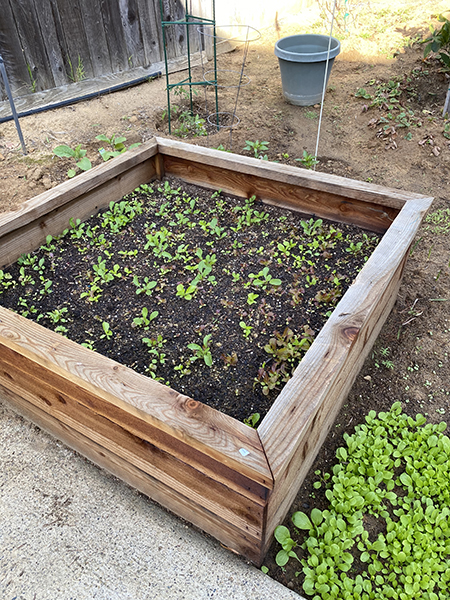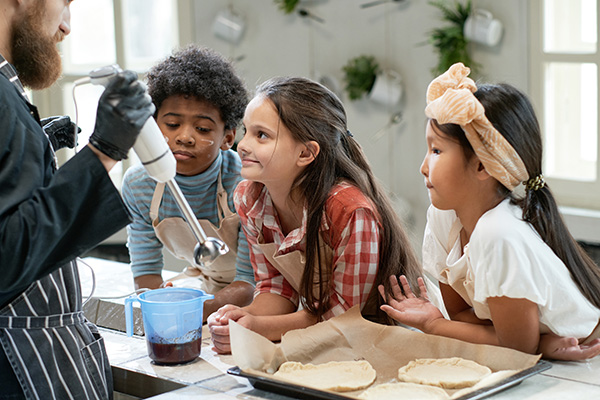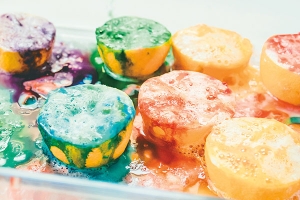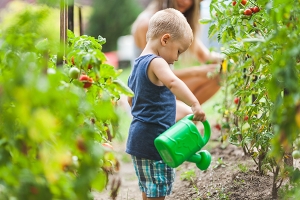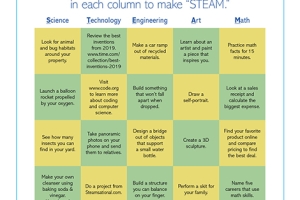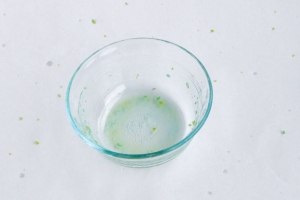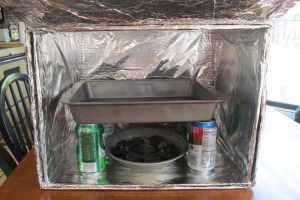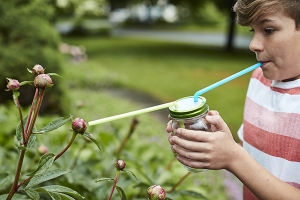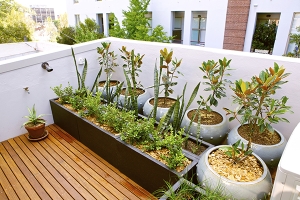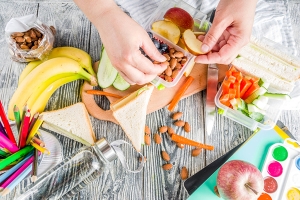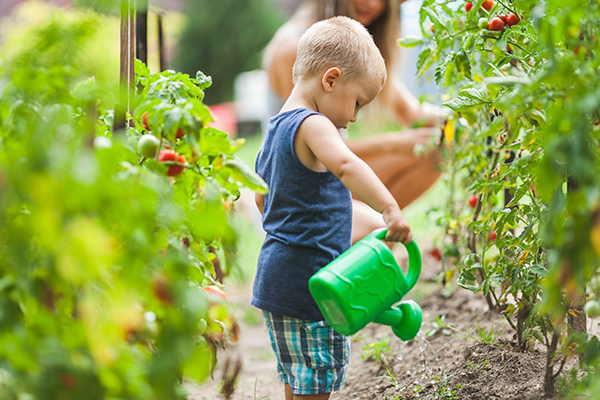
Wondering how to get your kids to eat more veggies? Grow them.
Whether it’s a container on the patio or a raised bed, gardening is easier than most people think, even with limited space. Last year, our family dug up the front lawn and built raised bed garden boxes. We started gardening when the kids were little, so over the years we’ve reaped the rewards of more time outdoors, building personal responsibility, and growing seeds into healthy, irresistible foods. Spring is the optimum time to dig into gardening with kids. Read on for great resources from local experts.
Why Garden?
Raise Adventurous Eaters
When children take ownership of growing food, they are more likely to try new foods. “Growing food cultivates curiosity,” says Jeni Barajas, environmental educator at Olivewood Gardens in National City. “My students have become more adventurous eaters. Even trying one bite gives kids the opportunity to expand their palate.” When kids try new foods, it creates a ripple effect, encouraging family members to try new foods, too. “We have families who now love Swiss chard on tacos.”
Pick Fresh Food
My greatest victory as a gardener is picking fresh food outside my doorstep. Food we grow tastes fresh and delicious, and I know my family is getting top-quality nutrients from the freshest, organic produce.
Encourage Sharing
With just eight lettuce plants, we have enough to share with neighbors, friends and family every week. We’ve built new relationships with neighbors who share with us, too.
Eat a Rainbow
- Different colored vegetables protect the body in different ways. “Eating a rainbow“ is the best protection we can provide our bodies. Find an infographic that includes specific fruits and vegetables of the rainbow (and their benefits) at www.sharp.com/health-news/eat-the-rainbow-infographic.cfm.
- Variety diversifies eating habits and builds gut health. Love tomatoes? Try growing several colors.
Support the Environment
- Organic gardening ensures no pesticides or synthetic fertilizers are used.
- No transportation is needed when harvesting produce in your yard, which saves gas and minimizes pollution.
- “Growing and nurturing food creates a new generation of stewards of the land,” says Barajas.
Get Outdoors
- Sunshine provides Vitamin D, which protects the immune system.
- Barajas’ students say they’re happier and less stressed when they’re outside.
- Gardening offers a mindful break from screens.
- Creates dedicated time to connect to nature.
Reap Educational Benefits
- Make choices and adapt to best practices while nurturing plants (problem solving).
- Enjoy science at your fingertips. Lessons about plant respiration, soil microbes and more are ready to explore.
- Build resilience. You’ll experience many successes, but some failure. Kids learn to try new things and do things differently when necessary.
Tips for Growing Food with Kids
Assess Your Space
- If planting in containers, determine placement: patio, balcony, doorstep.
- “Full sun” means sunlight for at least 6-8 hours.
Use Good Quality Soil
San Diego’s dirt is mainly made up of decomposed granite and clay, which are insufficient nutrients. Choose nutrient-dense potting soil for growing.
Choosing Plants
- Quality local nurseries offer the best variety.
- Choose fast-growing vegetables like radishes and lettuce to enjoy quick results.
- Let kids choose what to plant; it gives them ownership.
- Identify plants that grow well in your climate and conditions: Look for labels like “hardy” and “heat tolerant.”
- Planting in a shaded area? Try growing herbs.
Planting Seeds
- Don’t plant seeds too deeply. Sprinkle over soil, then cover with only ¼-inch more soil.
- Keep moist at all times.
- Allow kids to get their hands dirty. They love sowing, digging and watering.
Planning for a Larger Space (two+ raised beds)
- We found it cost effective to buy soil in bulk from a wholesale nursery.
- Add compost to enrich soil and mulch to maintain moisture.
- Drip irrigation helps save on the water bill.
Watering
- Watering every morning is good for the plants and a good routine for the kids.
- Water the plant’s base, not the leaves.
Try a Community Garden
Lease a garden plot in a community garden. For a nominal fee, you’ll reap the rewards of shared tools, soil, and advice about everything from pest control to composting from neighborhood experts. Find a San Diego community garden in your neighborhood: http://sdcgn.org/index.html.
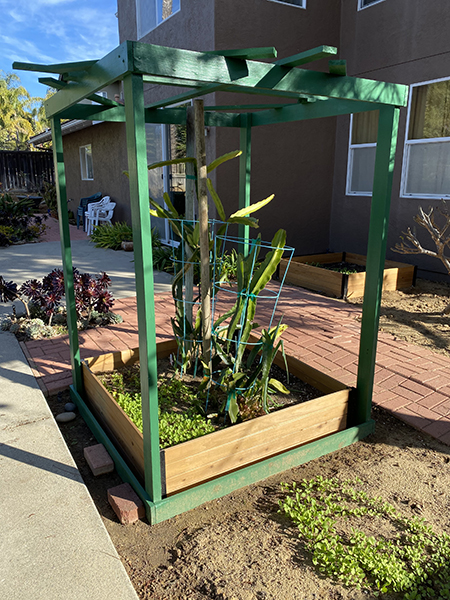
Quick Start to Container Gardening
“You can grow most everything in a container, as long as you fill it to the top with light nutrient-dense potting soil and it has a drainage hole or two. Radishes are the quickest crop and carrots are their friends. Pour a little of each of the seeds in the palm of your hand and sprinkle them over the soil in your container. Then cover them only 1/4” with more soil. Keep soil moist at all times and ensure plenty of sunlight. Radishes will space out the carrots as they plump up first; carrots will follow. You’re sure to harvest enough to share!”
- Mia Vaughnes, founder of Good Neighbor Gardens, a local urban sharecrop
www.goodneighborgardens.com
Cherie Gough is a local writer specializing in gluten-free nutrition. Follow her garden adventures on Instagram @cgoughwrites.
____________
